Simplify Industrial Wireless Integration Using Pre-Certified Wi-Fi 6 Modules with Bluetooth LE
Contributed By DigiKey's North American Editors
2025-02-12
With the rise of the Internet of Things (IoT), wireless connectivity has become a fundamental requirement for industrial applications ranging from equipment monitoring and asset tracking to building automation. Designers looking to implement this connectivity face multiple challenges, including integrating wireless chipsets, antennas, software components, global certification, security, and reliability in harsh environments.
These challenges can be overcome by opting for rugged, pre-certified Wi-Fi 6 modules with Bluetooth® Low Energy (BLE) 5.4 that deliver the necessary features while simplifying integration.
This article discusses wireless connectivity challenges for industrial system designers and introduces examples of pre-certified Ezurio Wi-Fi 6 modules with BLE 5.4. It also discusses pre-certified antennas and an associated development kit.
Key challenges in industrial wireless communications
Industrial environments contain an ever-growing number of endpoints that need to share high-speed data, and wireless networks are often the only practical means of communicating this data.
This can lead to network congestion for older wireless technologies, with latency issues and packet loss affecting operational efficiency. Outdated communications technology can also leave networks vulnerable to cyberattacks.
Modern technologies like Wi-Fi 6 and BLE 5.4 can solve these problems, but developing and integrating them requires strong RF expertise, especially in space-constrained devices and retrofit applications. Moreover, many wireless solutions require manual assembly steps, which slows production and increases costs.
Reliability is another concern. Many industrial environments feature significant electromagnetic interference (EMI), extreme temperatures, and vibration and shock. Finally, numerous applications demand low power consumption to extend battery life while ensuring compliance with global standards.
A robust solution: Wi-Fi 6 modules with Bluetooth LE 5.4
Ezurio’s Sona TI351 modules address the challenges of industrial wireless connectivity by combining Wi-Fi and BLE in robust, pre-certified packages (Figure 1). Built around the Texas Instruments SimpleLink CC3351 Wi-Fi and BLE companion IC, these modules are available in surface mount technology (SMT) and pluggable variants, with a choice between a built-in chip antenna or an antenna connector.
 Figure 1: The Sona TI351 is a family of compact, pre-certified Wi-Fi 6 and BLE 5.4 modules in SMT and pluggable variants with built-in antennas or antenna connectors. (Image source: Ezurio)
Figure 1: The Sona TI351 is a family of compact, pre-certified Wi-Fi 6 and BLE 5.4 modules in SMT and pluggable variants with built-in antennas or antenna connectors. (Image source: Ezurio)
All modules support Wi-Fi 6 (802.11ax) via an SDIO 2.0 interface with high-speed data transfer and built-in error detection and correction. Wi-Fi 6 offers several features that support reliable performance in congested industrial networks:
- Orthogonal frequency division multiple access (OFDMA) allows simultaneous transmission from multiple IoT devices on the same channel, boosting efficiency in dense deployments.
- Target Wake Time (TWT) optimizes battery life by allowing precise scheduling of device wake times.
- Dual-band support offers flexibility for different use cases: 2.4 gigahertz (GHz) ensures better obstacle penetration, while 5 GHz delivers higher bandwidth.
- An 18 decibel referenced to 1 milliwatt (dBm) transmit power provides reliable coverage across large industrial spaces.
The modules’ BLE 5.4 support is via a dedicated high-speed UART (HS-UART) channel. BLE 5.4 is a protocol that is well-suited to industrial environments. It supports:
- Periodic Advertising with Response (PAwR) to reduce power consumption by using predetermined transmission windows
- Periodic Advertising Sync Transfer (PAST) to simplify network management by enabling primary devices to share synchronization data
- LE 2 megabit per second (Mbit/s) physical layer (PHY) to support fast data transmission with a quick return to sleep mode, further improving power efficiency
- LE Long Range mode for reliable communication over extended distances
The modules support Wi-Fi and Bluetooth coexistence for applications requiring both protocols.
A high-reliability design
Sona TI351 modules incorporate an integrated power amplifier (PA) that boosts outgoing signal strength to ensure reliable operation in demanding environments. On the incoming side, a low-noise amplifier (LNA) enhances signal reception by amplifying weak signals while minimizing noise interference. This combination ensures stable wireless connectivity even in environments with significant EMI and physical obstacles.
The modules are also designed for physical reliability. The SMT versions have robust connections that tolerate vibration and mechanical stress, while the embedded antenna option removes a potential point of failure. The modules also have an operating temperature range of -40°C to 85°C.
Comprehensive software support for Linux and Android OSs
Sona TI351 modules include comprehensive software support for Linux and Android operating systems. For Linux, the connectivity stack has been tested across multiple kernel versions, with backported drivers for releases as early as v2.6.37 to ensure compatibility with older kernels. The stack supports familiar build environments, including Buildroot, Yocto, and Ubuntu.
Rather than providing just the hardware-specific drivers, Ezurio delivers a complete, pre-tested connectivity stack (Figure 2). This approach helps prevent incompatibilities between components and accelerates system integration. The stack is continuously maintained with the latest driver source and kernel components to ensure optimal performance.
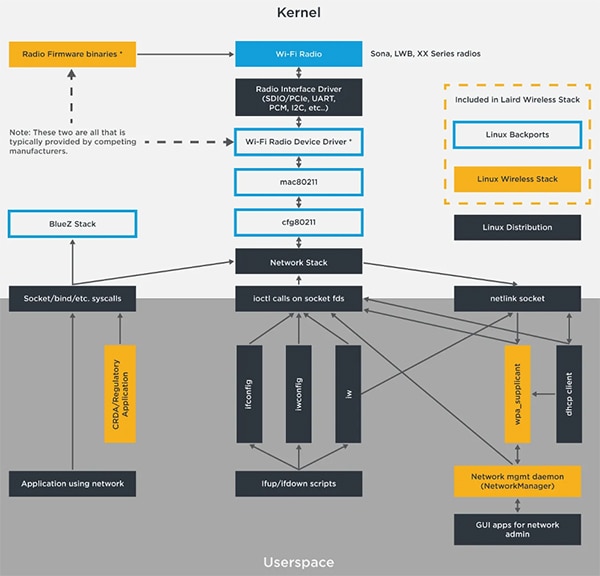 Figure 2: The Sona TI351 comes with a comprehensive connectivity software stack. (Image source: Ezurio)
Figure 2: The Sona TI351 comes with a comprehensive connectivity software stack. (Image source: Ezurio)
Security and certification concerns
The modules leverage the advanced security features of Wi-Fi 6 and BLE 5.4. On the Wi-Fi side, they provide robust support for enterprise-grade WPA2/3 security protocols, including advanced encryption and authentication mechanisms.
For BLE, the Encrypted Advertising Data feature enables the secure broadcast of sensitive information without the overhead of establishing continuous connections, which is particularly useful in building automation systems transmitting environmental data or access credentials. Additionally, the BLE Generic Attribute Profile (GATT) Security Levels Characteristic allows different security levels for various data types, optimizing the balance between security overhead and performance.
Regulatory compliance can be a significant headache, regardless of which protocol designers choose, especially for devices shipping internationally. To address these concerns, the Sona TI351 family is certified to standards that include FCC (US), IC (Canada), CE (Europe), UKCA (UK), MIC (Japan), RCM (Australia/New Zealand), and KCC (South Korea).
SMT and M.2 options provide assembly flexibility
As noted earlier, the Ezurio Sona TI351 family is available in several configurations to meet specific application requirements. For example, the 453-00200R (Figure 3) uses the compact 12 x 16 millimeter (mm) M.2 1216 SMT form factor with an integrated chip antenna. This design enables automated assembly while providing a ruggedized connection that can withstand industrial environments. This combination of features makes the module particularly well-suited for high-volume deployments where reliability and manufacturing efficiency are critical.
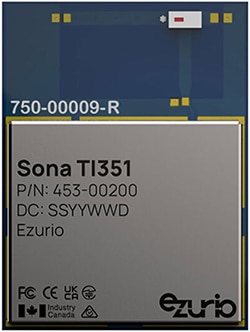 Figure 3: The Sona TI351 453-00200R is a compact 12 x 12 mm module in an M.2 1216 SMT form factor with an integrated chip antenna. (Image source: Ezurio)
Figure 3: The Sona TI351 453-00200R is a compact 12 x 12 mm module in an M.2 1216 SMT form factor with an integrated chip antenna. (Image source: Ezurio)
For applications requiring external antenna connectivity, the 453-00199R (Figure 4) has the same ruggedized M.2 1216 form factor but offers an MHF4L connector instead of a chip antenna. This configuration enables the use of external antennas for optimal signal reception in challenging RF environments, such as metal enclosures or areas with high EMI.
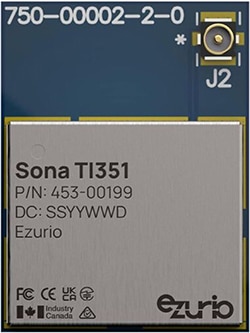 Figure 4: The Sona TI351 453-00199R module features an MHF4L antenna connector. (Image source: Ezurio)
Figure 4: The Sona TI351 453-00199R module features an MHF4L antenna connector. (Image source: Ezurio)
Unlike the two previous examples, the 453-00209 (Figure 5) uses an M.2 2230 Key E connector for pluggable system configurations. This feature enables easy field installation and replacement, making it particularly useful for equipment monitoring applications where minimizing system downtime during maintenance is crucial.
 Figure 5: The Sona TI351 453-00209 module uses an M.2 2230 Key E connector for pluggable system configurations. (Image source: Ezurio)
Figure 5: The Sona TI351 453-00209 module uses an M.2 2230 Key E connector for pluggable system configurations. (Image source: Ezurio)
This range of options allows system designers to optimize their implementations for specific use cases while maintaining reliability and ease of integration.
Pre-certified antennas streamline RF design
For modules equipped with the MHF4L connector, Ezurio offers a range of pre-certified antenna options. One example is the EFB2471A3S-10MH4L 5 W flexible Planar Inverted-F Antenna (FlexPIFA) (Figure 6) with adhesive backing for ease of integration. This triple-band (2.4/5/6 GHz, with support for 7.125 GHz) antenna maintains a low average voltage standing wave ratio (VSWR) of 1.6:1 at 5.925 to 7.125 GHz. It has a gain of 3.9 decibels relative to isotropic (dBi) at 5 GHz and is particularly well-suited for global applications where performance across different frequency bands is essential.
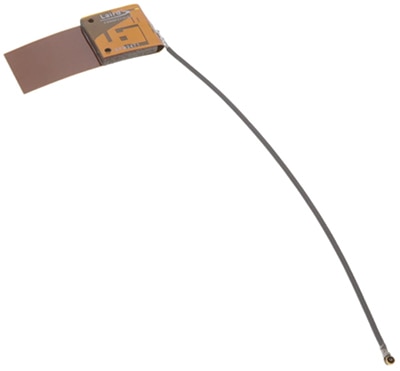 Figure 6: The EFB2471A3S-10MH4L is a triple-band 2.4/5/6 GHz, 5 W antenna. (Image source: Ezurio)
Figure 6: The EFB2471A3S-10MH4L is a triple-band 2.4/5/6 GHz, 5 W antenna. (Image source: Ezurio)
For stationary Industrial IoT (IIoT) and equipment monitoring applications, the 001-0021 (Figure 7) offers a dual-band 2.4/5 GHz solution. It has a VSWR of <2.5:1 at 2.4 GHz and a gain of 3 dBi at 5 GHz.
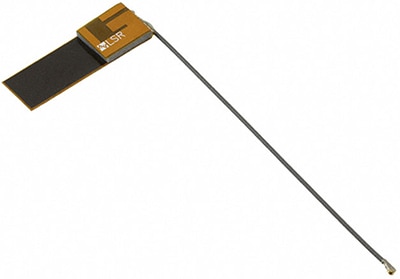 Figure 7: The 001-0021 is a dual-band 2.4/5 GHz antenna. (Image source: Ezurio)
Figure 7: The 001-0021 is a dual-band 2.4/5 GHz antenna. (Image source: Ezurio)
The lineup of pre-certified antennas can meaningfully streamline product development. Ezurio has already tested the antennas for use with the modules, reducing the risk of unexpected RF performance issues. More broadly, the combination of module form factors and antenna choices allows system designers to optimize their implementations while maintaining ease of integration.
Development kit provides full access
Designers can use the 453-00200-K1 development kit (Figure 8) to get a quick start with the modules. This comprehensive kit uses a 453-00200 chip antenna module and features multiple software and hardware interfaces to a Linux host for testing module functionality and performance.
 Figure 8: The Sona TI351 development kit is based on a 453-00200 chip antenna module and provides communications and hardware interfaces to a Linux host. (Image source: Ezurio)
Figure 8: The Sona TI351 development kit is based on a 453-00200 chip antenna module and provides communications and hardware interfaces to a Linux host. (Image source: Ezurio)
The kit includes high and low-speed cables and adapter/daughterboards that connect to UART or high-speed SDIO devices. On-board headers, jumpers, and switches make it easy to separate power and signal nets for testing and measuring power consumption during hardware and software development.
Conclusion
The Sona TI351 modules address key wireless connectivity challenges in industrial environments by packaging advanced wireless capabilities into a compact, rugged design. The pre-certification of both modules and antennas, multiple mounting options and form factors, and a comprehensive development kit minimize development time and risk.

Disclaimer: The opinions, beliefs, and viewpoints expressed by the various authors and/or forum participants on this website do not necessarily reflect the opinions, beliefs, and viewpoints of DigiKey or official policies of DigiKey.








